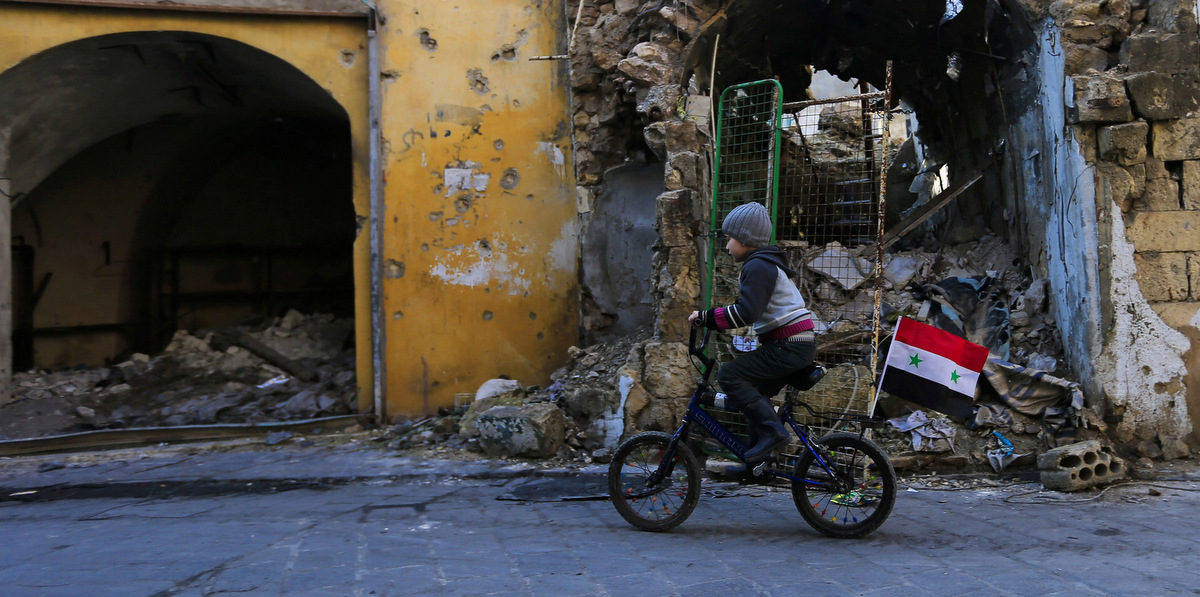
In early 2016 the hillside town of Madaya, just northwest of Damascus, was the focus of sudden Western and Gulf media campaigns featuring harrowing photos of emaciated elderly and children splashed widely across print, online and social media. Throughout 2016, these stories continued in Madaya, as well as in al-Waer, Homs, and in eastern-Aleppo areas.
The Syrian government was accused of not allowing in food and medical aid, of deliberately starving its people; the terrorists' presence was largely unmentioned. On Madaya, The Telegraph ran a headline, "Starving Syrians in besieged town of Madaya are reduced to eating cats and dogs," and subheadline, "The people of Madaya outside Damascus - besieged by regime forces and Hezbollah since July - are surviving on boiled leaves and street animals," with no mention of al-Qaeda or Ahrar al-Sham.
The Independent accused the "Assad regime" of deliberately starving 40,000 civilians and, while citing the Red Cross in the article, neglected to cite that organization stating it had sent in food aid in October 2015, and also failed to mention al-Qaeda's presence in the town. In the same vein, the New York Times ran a piece stating aid was denied from coming in, while also ignoring the realities on the ground and prior aid deliveries.
On Aleppo, corporate media extended the blame to Russia. The Independent published "Russia and Assad regime accused of 'starving' Aleppo," in early 2016, and in a July article fear-mongered about starvation after the Syrian army secured a key road which had connected Turkey to al-Qaeda in Syria and other extremists occupying areas of Aleppo. In November, The Independent reported that "a quarter of a million people in rebel-held east Aleppo will starve unless aid is allowed into besieged areas," ignoring that aid had been sent in numerous times prior, also ignoring that the al-Nusra-led coalition, Jaysh al-Fatah, had in mid-September rejected further aid coming into eastern Aleppo.
Completely unmentioned was the terrorists' hoarding of food and medicines, occupation of hospitals and schools, and trying of civilians in Sharia courts resulting in jailing (usually in underground prisons with tight solitary confinement cells) and/or execution, among other heinous crimes.
Throughout 2016 Aleppo and the district of al-Waer, Homs, were the subject of the same claims, with even more propaganda and slick media campaigns the intent of which was to vilify those fighting the terrorists dubbed "rebels" by the Western media.
Filed from abroad-or even as close as Lebanon or Turkey-such reports relied on unnamed sources, "'activists" who themselves often had ties to terrorist factions, and the Western-funded, terrorist-affiliated, White Helmets - a group that acclaimed journalist John Pilger recently denounced as a propaganda construct, which has received US$23 million from the US government alone.
Some of the those called "rebels" were members of Ahrar al-Sham (listed as a terrorist group in US Congressional documents), Nour el-Din el-Zenki (known for their beheading of a Palestinian youth in mid-2016), and even, unbelievably, al-Qaeda in Syria-Jabhat al-Nusra (rebranded as Jabhat Fatah al-Sham, and now Hayat Tahrir al-Sham).
The US "Syrian Train and Equip Program" saw $500 million approved in 2014 for training "Syrian rebels." Shortly after the US-trained Division 30 "Syrian rebels" entered Syria in mid-2015, their commander (and presumably all of the weapons the US had provided) was taken by al-Nusra.
A November 2014 Newsweek article cites former CIA operative Patrick Skinner, who stated:
"The main problem with plans that arm and train the 'moderates'-who ominously are moderate only in their fighting abilities- ... is that it assumes perfect knowledge, or 'good enough' knowledge, about the people being armed. When in fact there is nothing close to that.... The background info on these fighters is next to nothing and misleading, especially in Syria, where we don't have a liaison relationship, and so the vast majority of even check-the-box vetting is by third parties [who are] out-of-the-country players with a stake in the game."Indeed, the US support has included more than mere training. It has also encompassed the supply of TOW missiles to some "opposition" groups, and the turning a blind eye to Saudi supplying of many more armed groups with these missiles.
A June 2016 article on Medium.com outlined the different factions possessing TOWs, and noted:
"Northern Thunder Brigade appears to be the most recent TOW supplied group, and is a special case as this group is part of a new wave of North Aleppo Vetted Syrian Opposition [VSO] who have been trained and equipped in part by the US Department of Defense [DoD].Important to keep in mind, other TOW groups have historically liaised with the CIA in terms of US agencies under the covert "Timber Sycamore" program, and this CIA/DoD lack of coordination and differing outlook is a major complicating factor with regards to foreign backing of the Syrian Opposition and the associated TOW program."
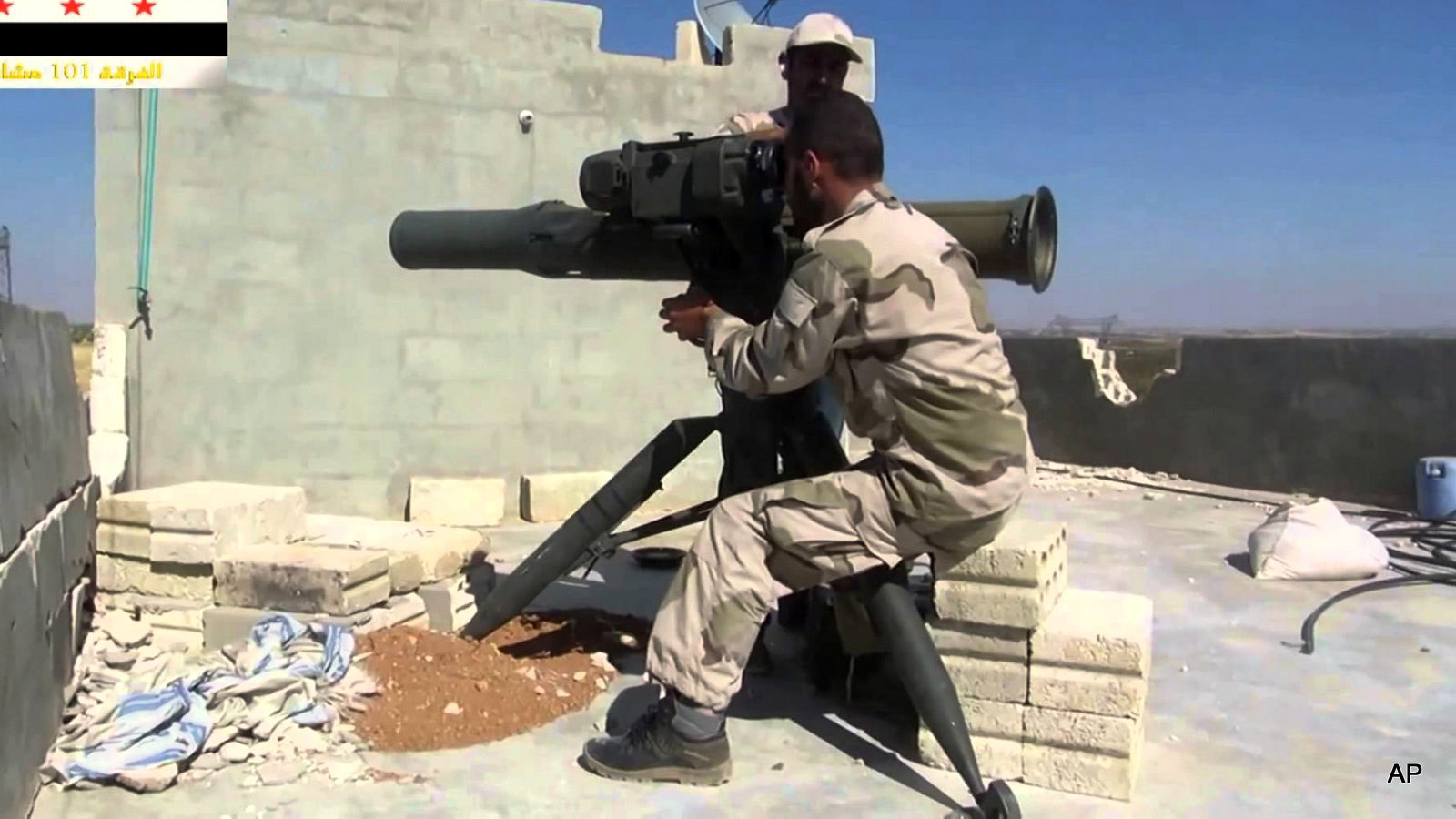
That is what I did again in June 2017.
East Aleppo starved and trapped by the Syrian government?
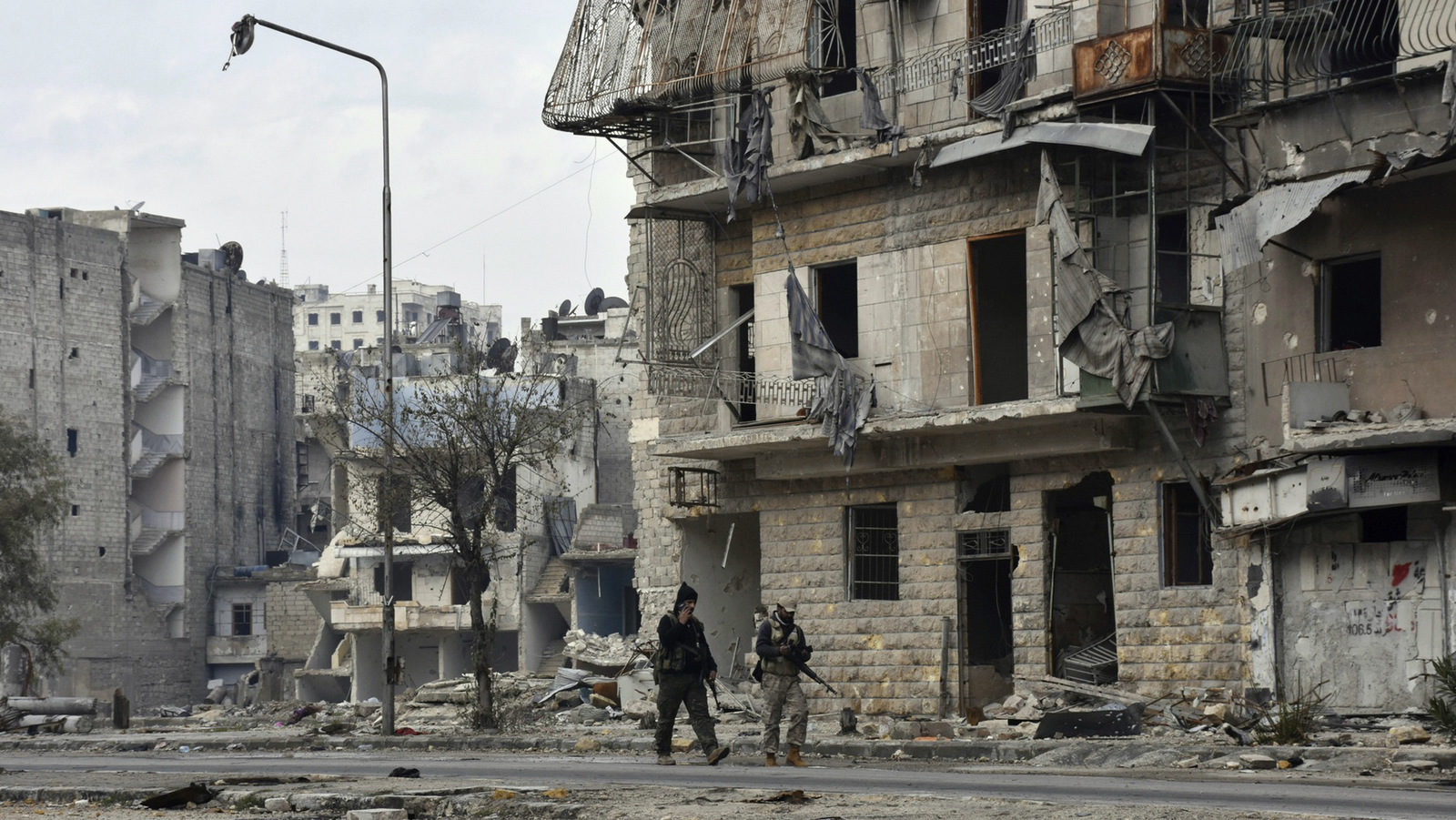
Instead, Western corporate media focused almost exclusively on areas occupied by al-Qaeda and other extremists but usually disregarding their presence while spinning war propaganda against the Syrian government.
In November 2016, while I was standing on the Castello Road humanitarian crossing, two mortars hit nearby, the closest within 100 meters. They originated from areas west of the crossing occupied by militants of the Jaysh al-Fatah coalition, which included al-Qaeda in Syria, Ahrar al-Sham, and others. This was not the first time that armed groups attacked crossings, preventing civilians from leaving.
Roughly a week later, in a school sheltering internal refugees, I met a family from the eastern Halloq district who had fled their area in late October, along with over 40 others. The father said that on two prior occasions he had been arrested and beaten by terrorists when he tried to flee.
"In the beginning, they beat us and imprisoned me," he said of a short period of imprisonment. According to him, people trying to flee would be punished, but not necessarily with long-term imprisonment.
He spoke of militants hoarding and controlling the food, forcing women to cover themselves head to foot, and attempting to intimidate civilians from fleeing by telling them the Syrian army would rape their women and murder the men.
Footage again emerged of civilians coming under fire from militants while escaping to greater Aleppo.
Some weeks later, Aleppo was secured, and the testimonies of horrors under 'rebel' rule were heard, including the accounts of civilians who blamed the 'rebels' for their suffering and hunger. Western media spun the liberation of Aleppo from terrorists as the city having "fallen." The jubilation of Syrians in Aleppo directly contradicted this lie.
The state Eye and Children's Hospitals, in the eastern district of Shaar, were militarized by terrorists of Tawhid Brigade, as well as by al-Qaeda in Syria and ISIS. In the bowels of the hospital, when I visited in June 2017, I saw remnants of food and medical aid - sent from Gulf states, Turkey, America, and various organizations - controlled and hoarded by terrorists.
Terrorists' Sharia Court and prison in hospital complex
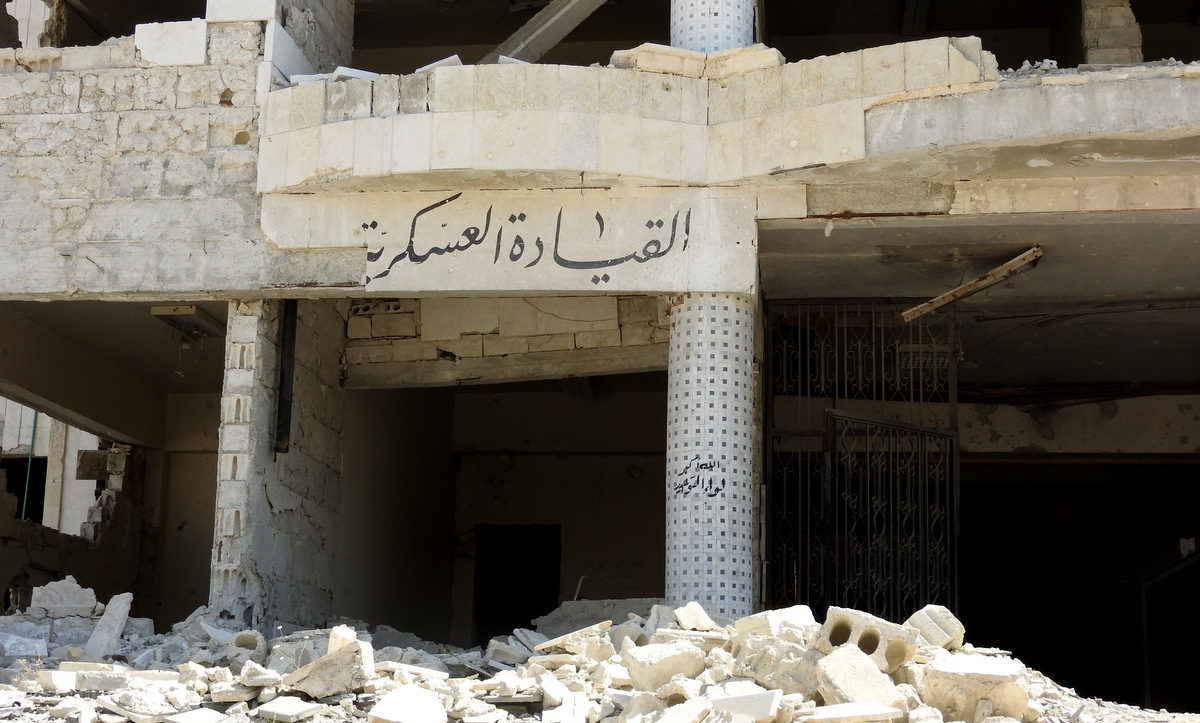
This June, in the Eye Hospital complex, I passed a building marked as the headquarters of the Tawhid Brigade, and a building marked on an outside wall with the writing, "The Sharia court in Aleppo and its countryside," before entering and descending to another underground prison.
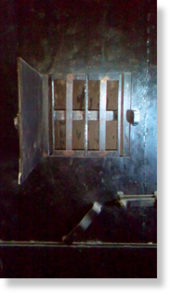
Many of the cement room-cells contained religious texts, in boxes and plastic crates, and on the main level two rooms had been used as classrooms, segregated by sex, for teaching the extremists' beliefs to Aleppo's mostly-Sunni Muslims.
Prisoners' writings, with dates, on the walls showed that at least some of them were held in this dungeon for over a year. The fate of some prisoners was execution, depending on the perverted rulings of terrorist judges.
Western media played down the militarization of hospitals in Aleppo by al-Qaeda affiliates.
Independent British journalist Vanessa Beeley visited the hospital complex-turned-prison in April 2017 and interviewed a man who had been imprisoned for seven weeks by Jabhat al-Shamiya (the Levant Front coalition of al-Qaeda and Salafi terrorists) because he talked about how bad conditions were in East Aleppo, under the terrorists.
Beeley told me some of what the man, Ahmad Aldayh, a shopkeeper, had told her:
"I was eyewitness to one execution: A young man, the only child in his family, was arrested because the terrorists found on his mobile phone a photo of his friend holding the Syrian flag. They tortured him for more than four hours and then executed him.Looking at just one example of the kind of propaganda coming from Western and Gulf media on Aleppo, a Newsweek article by Lucy Westcott, comparing Madaya with Aleppo, lamented what it said were 250,000 people besieged in Aleppo, while also lamenting the Children's Hospital "irreparably damaged by bombs dropped by the Syrian government last week, according to residents and medical workers..."
We were all treated very badly. One woman begged three times for food and said she was starving. The warden ordered the prison guards to torture her for three hours as punishment for complaining. Just before the SAA fully liberated the area and the Eye Hospital on the 4th December 2016, 22 other prisoners were executed. They were all shot. They were also about to throw another prisoner off the roof of the building but the SAA advance was so fast they fled without killing him."
But neither Westcott nor any of her colleagues could verify the reported 250,000 number. In the end, 110,000 civilians registered at the Jibreen Registration center; another estimated 10 percent might have gone straight to stay with family instead; and according to the Red Cross, 35,000 people ("fighters" and their family members) were evacuated out of Aleppo. The total number was thus at most 150,000, most likely significantly lower.
Westcott also failed to mention the militarization of the Eye and Children's Hospitals, let alone the below-ground dungeons for imprisoning civilians. She decried the use of siege, a common tactic of wars past, and one which America employed in Iraq (for example the over 4-year siege of Sadr city), and whitewashed the crimes of al-Qaeda and partners in Aleppo.
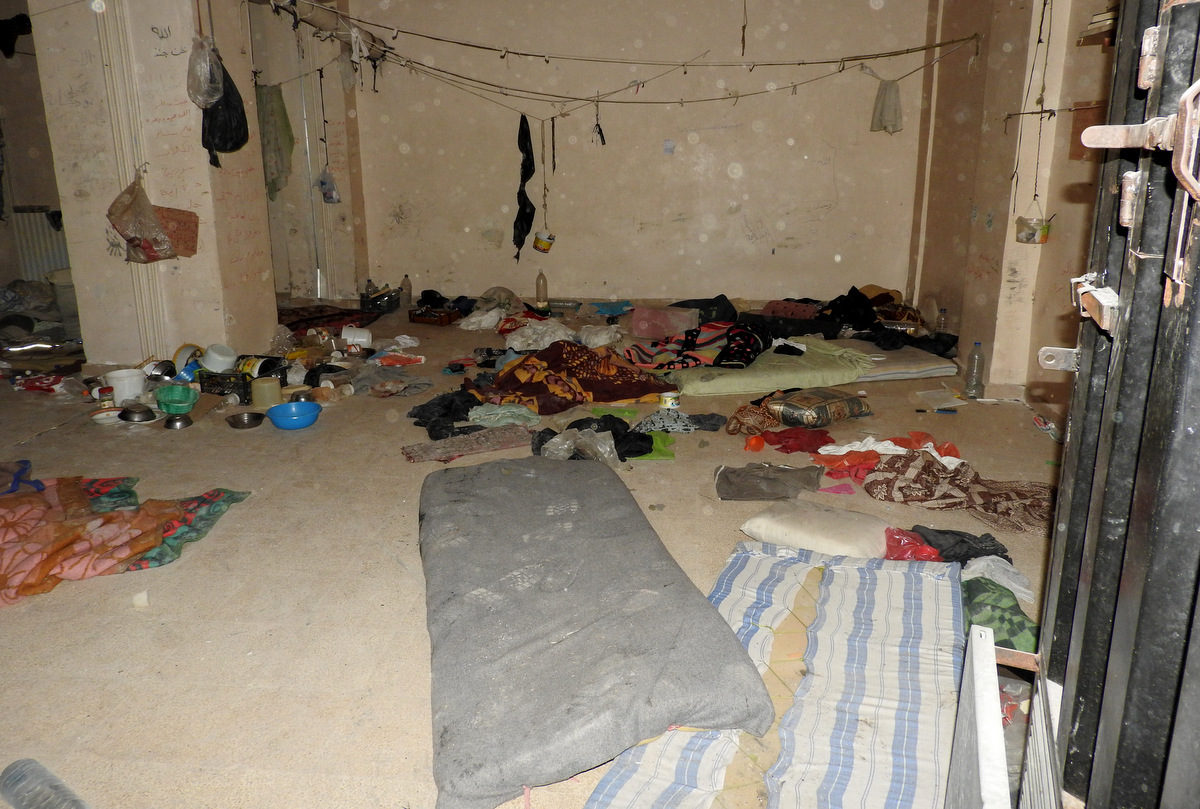
"The reality of the so-called besieged, hard-to-reach areas is that some of those areas are controlled by terrorist groups who are using civilians as human shields, and other areas are besieged from the terrorist groups who are preventing the delivery of humanitarian assistance"Meaning that the terrorist armed groups are two categories. One category is exerting, besieging on the civilians from within inside. And the other category is exerting, besieging from outside.
In Kafraya and al-Foua, the terrorists are besieging the two towns from outside, surrounding the two towns, in Idlib. But in Madaya and al-Zabadani, the terrorists are inside. So they are using the civilians as human shields while they are inside." This applied to Aleppo and al-Waer, among other areas, as well.
MSF's "destroyed" Quds hospital?
In April 2016, media, in chorus, reported that the Syrians or Russians had "destroyed" the Quds hospital in Sukkari, eastern Aleppo. The source of this claim was Médecins Sans Frontières (MSF), which reported: "According to hospital staff on the ground, the hospital was destroyed by at least one airstrike which directly hit the building, reducing it to rubble."
The lie was repeated, including in this Washington Post report: "Airstrikes Wednesday night collapsed a hospital supported by Doctors Without Borders and the International Committee of the Red Cross (ICRC)."
Yet, in June 2017, I stood inside the intact Quds hospital, which had not been reduced "to rubble" as MSF had claimed. It is not plausible that the building was "destroyed" and then rebuilt while eastern areas of Aleppo were under military siege.
On one ground floor wall inside the building, I saw a poster with the logo of an association (WATAN) backed by the Norwegian Aid Committee (NORWAC) in the colors of the Free Syrian Army logo. Next to it, a poster of another NORWAC-supported association, Khayr.
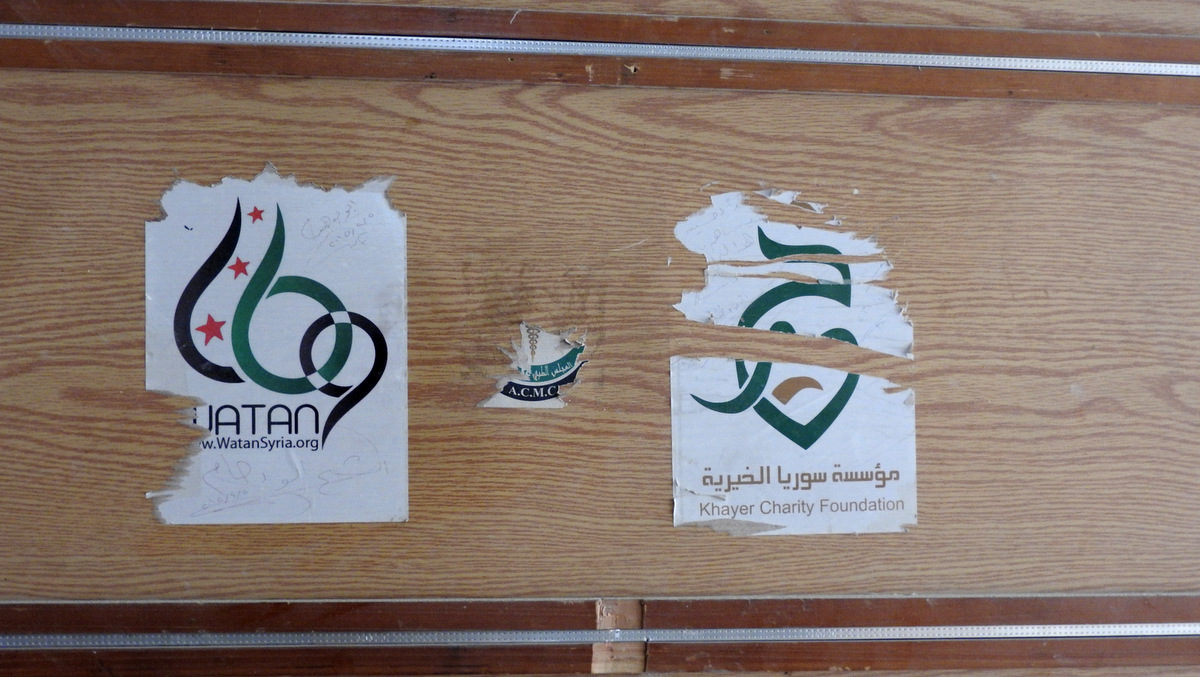
In November 2014, an article in Norwegian media revealed that ISIS had taken over the area (Tel Abyad) where since 2013 NORWAC had supported a hospital, providing 250,000 kroner a month to hospital staff. Soon after, another article noted the Norwegian Ministry of Foreign Affairs' decision to cut support to the hospital, as ISIS had control of the area and its members were being treated in the hospital. The article noted that NORWAC regretted the Ministry of Foreign Affairs' decision to halt support to the hospital, as "this could have an impact on the Syrian civilians who use the hospital."
It is incredible that NORWAC was willing to keep supporting an ISIS-controlled hospital, and it is further beyond credibility that NORWAC was not aware that the two organizations-Khayr and WATAN-which they supported in al-Qaeda occupied eastern Aleppo, were actually working with, and perhaps included, terrorists.
When journalist Vanessa Beeley visited the premises in late December 2016, she documented the same intact state of the building, fortified with sandbagging around doors and windows, just as terrorists' military headquarters had been.
Watch Vanessa Beeley's footage of the purportedly destroyed Quds hospital in Aleppo:
Ambulance boy, saved by White Helmets after airstrike?
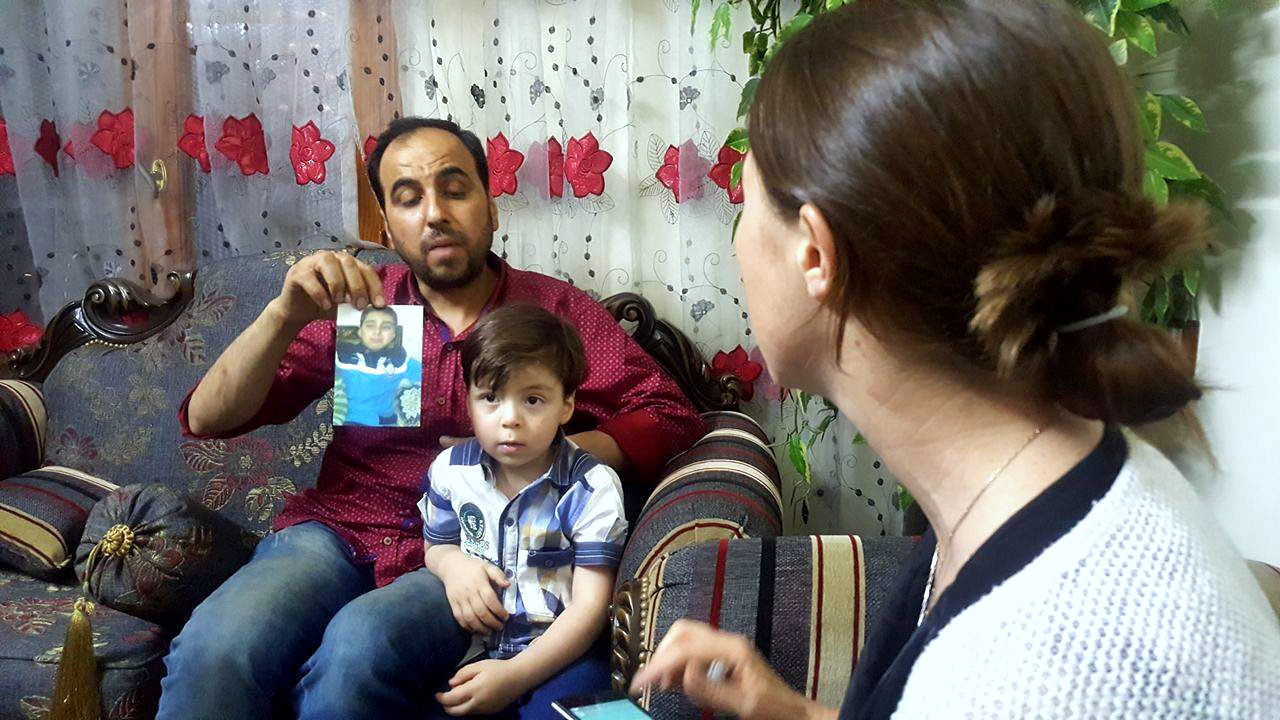
In June 2017, I met the boy and his father, who gave me an account very different from that which Western media had spun. Omran was only lightly injured, his father Mohammad said, and not by an airstrike. The father never authorized the famous photo of the boy to be taken and refused any further exploitation of his son.
The White Helmets, Mohammad Daqneesh said, had not 'rescued' his son, they had taken him for a photo op, exploited his image and name, and harassed Mohammad himself with attempted bribes and then threats.
Seven-year-old girl tweeting for peace?
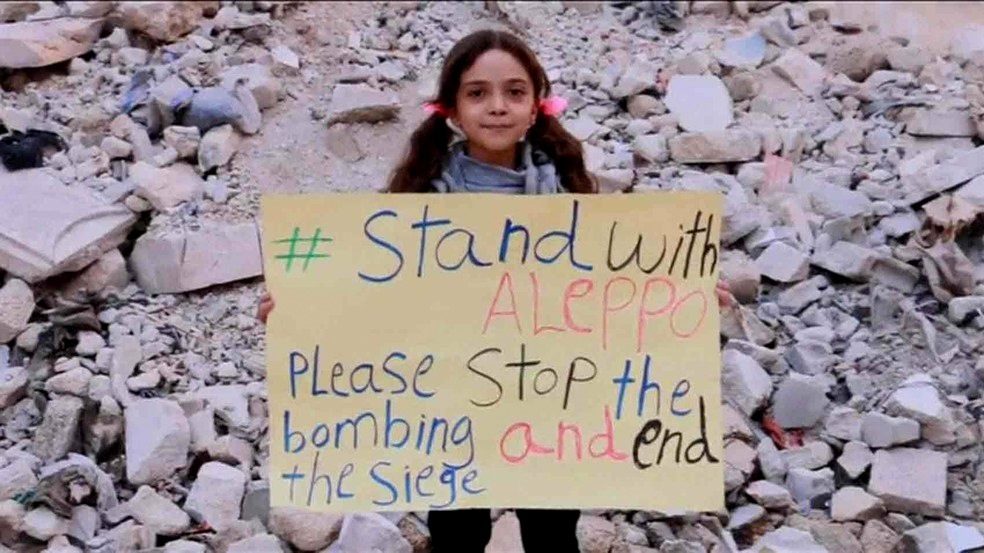
Although Iskef, whom I met in Aleppo this June, has published a number of videos on his investigations, and willingly replied to my follow-up questions regarding Bana, none of the Western journalists who were so fervently endorsing the Bana narrative has bothered to contact Iskef about his on-the-ground revelations.
Based on his documentation and our follow-up conversations, I wrote:
"Ghassan's father, Mohammed al-Abed, was a known arms dealer and had a weapons maintenance shop in Sha'ar, servicing light to heavy weapons for terrorist factions. The al-Abed weapons shop was opposite a school-turned-headquarters for al-Nusra."Something all of those corporate journalists crying over the Bana stories might have been interested in, no?
In his second video, Iskef revealed that in the exploitation of Bana al-Abed, the girl was made to speak in a video made just meters from the main al-Qaeda headquarters in Aleppo, near which ordinary civilians were forbidden from filming, much less hanging around.
"They are criminals, terrorists"
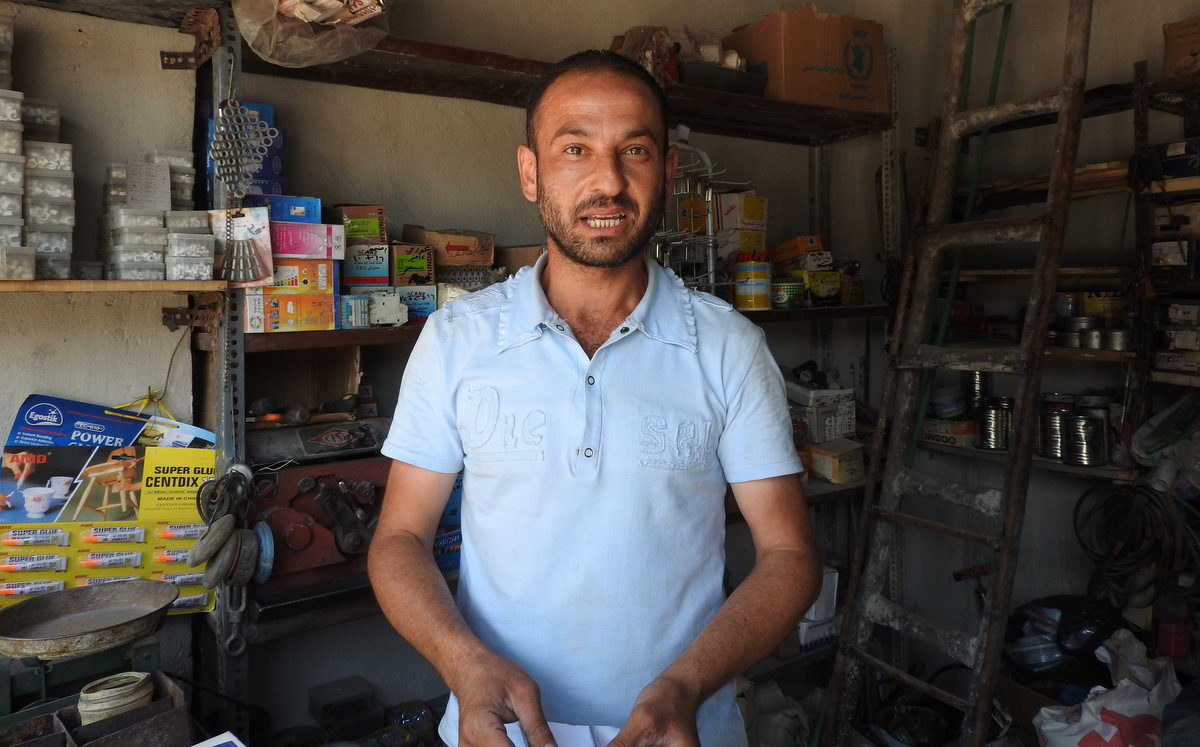
"They are criminals! They call themselves 'rebels', but actually they are all terrorists, with no exceptions. They're all the same but with different names. ISIS is like Nusra, Nusra are like the FSA, the FSA are like ISIS."When armed groups arrived in his area, the man stayed for one month, then left, taking his family to the government-secured area of Hamdaniya, which he described as "one of the most dangerous areas. We were targeted the most with missiles, mortars and Hell Cannons."
Following the liberation of Aleppo, like so many others, he came home. "Wherever the army is, there is safety," he told me. "Life is back, we're safe again. We used to fear for the safety of our children when they were going to school or going to relatives."
Down the street from the small shop, in the courtyard outside of a mosque, a group of Aleppo youths were preparing Ramadan meals for the district's poorest, part of the Saaed Association's "Break the Hunger" campaign which began in Damascus years ago.
One volunteer explained to me that they chose to cook and serve the food in the Bab al-Hadid district of Aleppo, "an area that was filled with fear and destruction," to say that there is still life and hope there.
An August 11 press release by the International Organization For Migration (IOM) noted that over 602,000 displaced Syrians had returned home in 2017. The IOM press release reported that "half of all returns in 2016 were to Aleppo Governorate," with the city of Aleppo receiving the most returnees.
There is still time for the countless corporate media journalists who lied and propagandized to apologize and admit their guilt, or perhaps pretend innocence but at least admit being wrong - even to go to Aleppo anew (or for the first time) and listen to the living witnesses of the events they falsely reported. But they won't. Those stories are old, and now these same journalists are busy propagating or fabricating new ones. In doing so, they are guilty of some of the worst war propaganda in history.
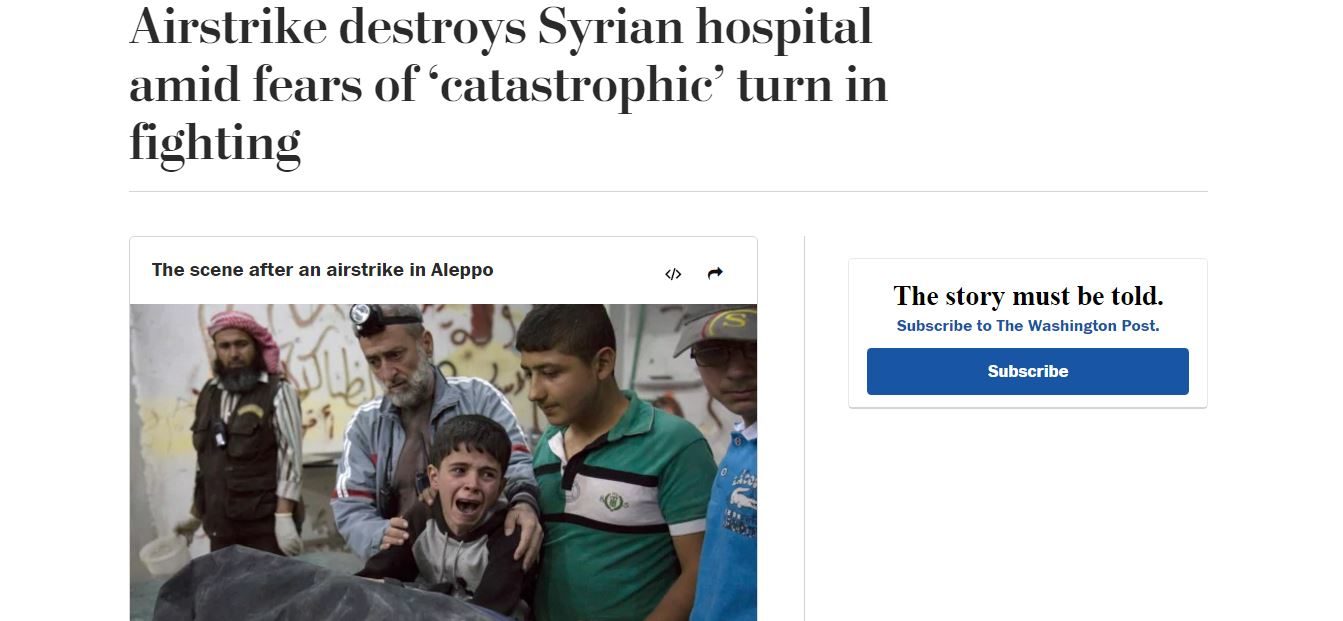



www.blacklistednews.com